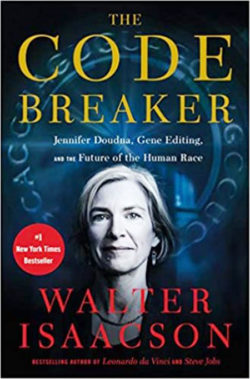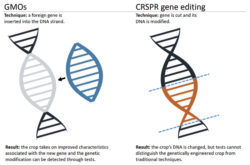Read Time: 6 Minutes Subscribe & Share
Dog Day Films
 Early July through the beginning of September make up the somewhat official Dog Days of the year. As a dog owner, I thought for a long time that meant it was so hot and unpleasant that dogs just nap their way through the heat and humidity and probably I should too. But actually the term comes from the Greek and Roman observation of the rising of the star Sirius (the dog star) in the heavens, which brought on heat, drought, sudden thunderstorms, lethargy, fever, mad dogs and bad luck — according to the scribes at Wikipedia. This is the period when I water my unfortunate plants on the deck and outside my building, then stagger in and lie on a couch. I read cookbooks for ideas to utilize all the local produce I have overbought. But most often, when the AC beckons, I settle in and watch films in the late afternoon.
Early July through the beginning of September make up the somewhat official Dog Days of the year. As a dog owner, I thought for a long time that meant it was so hot and unpleasant that dogs just nap their way through the heat and humidity and probably I should too. But actually the term comes from the Greek and Roman observation of the rising of the star Sirius (the dog star) in the heavens, which brought on heat, drought, sudden thunderstorms, lethargy, fever, mad dogs and bad luck — according to the scribes at Wikipedia. This is the period when I water my unfortunate plants on the deck and outside my building, then stagger in and lie on a couch. I read cookbooks for ideas to utilize all the local produce I have overbought. But most often, when the AC beckons, I settle in and watch films in the late afternoon.
Preaching To The Choir
Two films I have just watched back to back are based on two opposing viewpoints surrounding the controversies of genetically modified organisms. My curiosity was piqued as my husband is currently consumed by the book The Code Breaker by Walter Isaacson, (which of course, I want to read, but he won’t put it down). The book covers the career of Jennifer Doudna, a major star in the scientific world of gene editing and a principal warrior in the battle to control the Covid Pandemic. Both films about gene-tinkering received quite a few accolades (and criticism as well).
surrounding the controversies of genetically modified organisms. My curiosity was piqued as my husband is currently consumed by the book The Code Breaker by Walter Isaacson, (which of course, I want to read, but he won’t put it down). The book covers the career of Jennifer Doudna, a major star in the scientific world of gene editing and a principal warrior in the battle to control the Covid Pandemic. Both films about gene-tinkering received quite a few accolades (and criticism as well).
GMO OMG was produced in 2013 by Jeremy Seifert and chronicles his odyssey to uncover the mysteries surrounding the hype of GMOs in the American food system. His cover story is to educate his sons (one of whom is an inveterate seed saver) on what is in their food. Seifert’s ability to create a cohesive film, presenting footage that would enhance several worthwhile arguments against the misuse of genetic modification, unravels pretty quickly. It’s an earnest attempt — kind of like a high school student trying to copy Michael Moore in film-making. Off the cuff (at least for film purposes) confrontations with the enemy, clips of interviews with victims of the system, but sadly no real follow-up on any of the science toward either end of the GMO spectrum. Lots of silly graphics, winceworthy use of his children in nonsensical asides, and a rather patronizing view that the stuff is so complicated, viewers wouldn’t understand it anyway.
Yes, everyone in the room agrees that Monsanto is a bad guy and that farmers tied to patented seed farming are no better than serfs, but nothing in the film ties it all together. Gene modification or gene editing can be used to enhance life on our planet, or it can be misused for corporate greed with very little oversight. GMO OMG as a film unfortunately is the perfect set-up for ridicule in the following film.
The second film, which was funded by the IFT (Institute Of Food Technologists) in 2017, was to be the reasoned rebuttal to films like GMO OMG. It has as its director, Scott Hamilton Kennedy, who produced The Garden, which I thought was excellent. In Food Evolution, Neil De Grasse Tyson is the soothing scientific voiceover (he is a scientist in astronomy and astrophysics with public presentation chops), and there are strategically placed clips of Bill Nye “The Science Guy” – who is a mechanical engineer and a continually evolving TV presenter. Its two protagonists are Dr. Alison Van Eenennaam, a prominent UC Davis animal scientist, and Robert Fraley, the chief science technology officer of Monsanto. What could go wrong?
Well, a few niggling things: IFT itself is partially funded by big food corporations such as Coca Cola, and even the IFT president at the time of the film’s creation was a former DuPont and Monsanto employee. She has now moved on to working for a pesticide trade organization. Dr. Van Eenennaam, who specializes in animal genomics, actually holds several patents in genetic engineering and the assignee is Monsanto. Robert Fraley cheerfully admits to working for “the most hated company in the world” and casually brushes aside a serious question about glysophate as a carcinogen as “pseudo science,” ignoring the numerous independent scientific studies that link the two. Opponents of GMO foods are cast as silly worry-warts or discredited scientists. Those whose credentials are equally open to critical exposure but espouse the safety of Monsanto science, are treated as valued commentators.
Tools Of The Trade
While both films flagrantly stomp on opposing arguments in a field that requires deft and knowledgeable discussion, there are some things we all should at least be familiar with. Gene editing and gene modification are tools in the toolbox of scientific research, just as nuclear fission is. Gene editing is basically cutting part of an organism’s genetic structure (using CRISPR technology as a sort of molecular scissors) to create an improved version. CRISPR uses an enzyme in a bacteria for this genetic trimming. Genetic modification is a bit more drastic – and more expensive – in that the scientist is inserting a desired gene (usually from a bacteria) of an outside organism into another. Selective breeding, which has been used for thousands of years, is different from both in that the genetic make-up of the plant or animal is not disturbed.
should at least be familiar with. Gene editing and gene modification are tools in the toolbox of scientific research, just as nuclear fission is. Gene editing is basically cutting part of an organism’s genetic structure (using CRISPR technology as a sort of molecular scissors) to create an improved version. CRISPR uses an enzyme in a bacteria for this genetic trimming. Genetic modification is a bit more drastic – and more expensive – in that the scientist is inserting a desired gene (usually from a bacteria) of an outside organism into another. Selective breeding, which has been used for thousands of years, is different from both in that the genetic make-up of the plant or animal is not disturbed.
Both of these technologies can and have been used for good (meaning beneficial to humanity and the planet). Gene editing and modifying have been used to create tastier produce, virus resistance in crops, and foods that require less water and fertilizer to mature. Gene modification, however, has become a prisoner of transnational agricultural companies, whose goals include the accumulation of wealth and the control of farming. The number of GMO crops that are “created” to improve taste, disease resistance or sturdiness is tiny. 80 to 90% of GMO crops are engineered solely to withstand glysophate, a Monsanto-developed herbicide used to kill weeds (aka Roundup). Syngenta, which has been bought by ChemChina, Bayer -Monsanto, DuPont-Dow have all left a very dirty trail of corporate greed and expensive legal punishment for many who have crossed them in courts. None of these companies willingly share their scientific data with the public, often with tragic consequences.
Biodiversity vs Monoculture
One of the most interesting things that both films have in common is the emotional topic of how best to feed the world and combat or survive climate change. GMO OMG promotes biodiversity and seed saving independent of the three companies that now control globally what is planted. Food Evolution posits that biotech companies actually provide more robust crops, more efficient use of farmland and yield new types of animals and plants that can survive climate change. It is interesting to note, though, that domestically, 40% of the commodity corn crop is funneled into the federally subsidized ethanol program and not to starving populations across the globe. Another side note is that there are “low tech” solutions that have been found to solve crop issues in Africa, for example, without the handcuff of a corporately owned patent.
As Jon Stewart famously said on the Stephen Colbert Show recently, “Science is incredible, but they don’t know when to stop. Nobody in the room with those cats ever says, ‘No, I don’t think we should do that.’” A purpose of science is to advance theories, test them, and provide the data backing their research and opinions. Science is not static, and it is never without politics.

Kitchen Detail shares under the radar recipes, explores the art of cooking, the stories behind food, and the tools that bring it all together, while uncovering the social, political, and environmental truths that shape our culinary world.




Jurassic Park: Your scientists were so preoccupied with whether they could, they didn’t stop to think if they should.
Jennifer,
Great comment abut the same issue!
Nancy